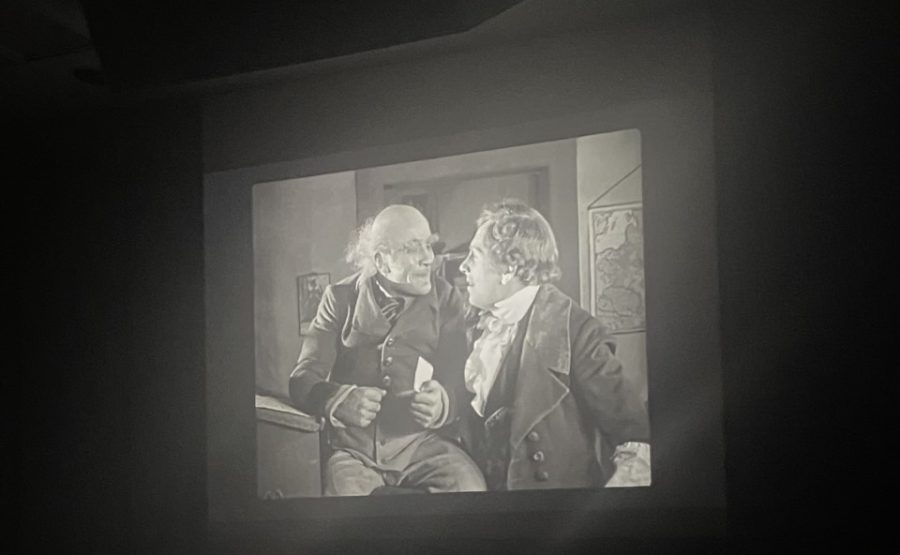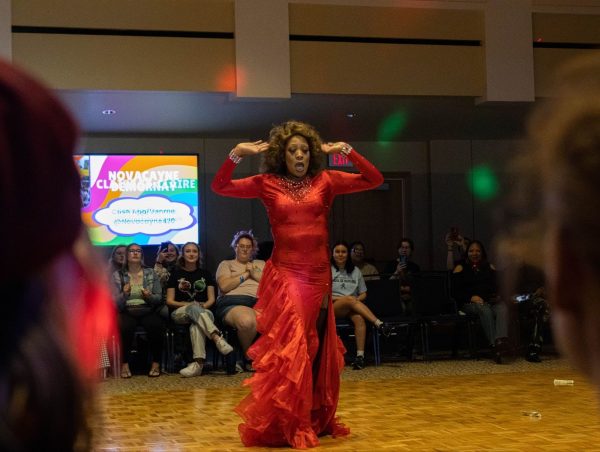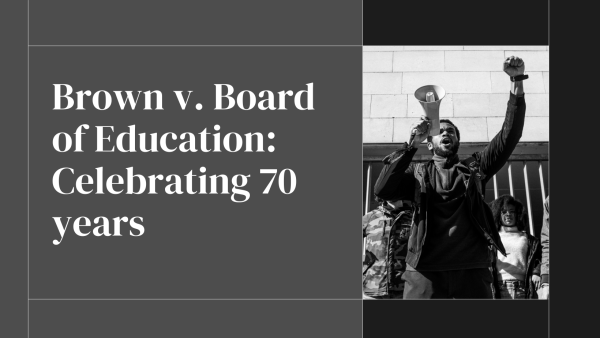Phi Alpha Theta hosts series of historical film nights
Krock, the estate agent and servant of the vampire Orlock, speaks with Hutter during the film “Nosferatu.”
For students looking for something fun, spooky and informative, Phi Alpha Theta hosted historical movie nights Oct. 25, Oct. 26 and Oct. 27 at 7 p.m.
On Oct. 25, Phi Alpha Theta organized a movie night where they showed the movie “Nosferatu” (1922) by Friedrich Wilhelm Murnau in Henderson 112 at 7 p.m. The movie is about a vampire, but it is not about just any vampire. Even though they were not allowed to say it during the event, the movie is an adaptation from Bram Stoker’s novel “Dracula.” Since the producers did not have the copyrights to use Dracula, they changed multiple characters’ names and other details for this movie so that it was somewhat different from the book.
“They were trying to pull a quick one, and of course they failed,” said Tom Prasch, professor and chair of history and geography. “They got caught, but they were trying to say they were doing Dracula and they weren’t saying Dracula so they could tell us the story without paying for the rights.”
“Nosferatu” is another word for vampire in the Romanian language, and the film is recognized as a masterpiece for Weimar-era Expressionist cinema. Even though it is a silent film, the music keeps you on your toes and listening to the score for clues about what’s going to happen.
The movie is about a vampire, Count Orlok, wanting to buy a house across from his estate agent, Hutter, to prey on the agent’s wife, Ellen. Hutter was able to sell the home to Orlok, but later realized Orlok may be a vampire. Hutter is trapped inside of a castle while Orlok is hiding in a coffin on a ship and murdering just about everyone on it. The citizens of Transylvania believe their deaths were caused by a plague. Little did they know Orlok was really the cause.
The film was made in 1922 and finding a well-restored copy is challenging. According to Prasch, the version of this film that was shown that night was one of the best versions he has seen, and viewers can watch it for free on Tubi.
Jesse Nadeau, a Washburn alumni, came to this historical movie night because of his major in film and to hear Prasch give commentary during the movie.
“I took courses with Dr. Prasch, and always valued his insight into both movies and the history behind them,” said Nadeau. “It’s always been illuminating and enjoyable.”
At the end of the show Prasch and Mattew Nyquist, assistant professor of mass media film and video, answered questions about the movie and gave a bit more historical context.
On Oct. 26 at 7 p.m. in Henderson 100, there was a showing of the Spanish version of “Dracula” (1931) and according to Prasch, the movie was recorded using the same set as the English version. It was shot right after that version but at night.
On Oct. 27 at 7 p.m. in Henderson 112, Prasch talked about the social history of vampires in literature and film. This session included his three basic arguments about vampires. which are: they’re always exotic, they are sexual because of bodily fluids and whenever they are brought into the city, things are more intense.
Edited By: Rakesh Swarnakar, Simran Shrestha
Your donation will support the student journalists of Washburn University. Your contribution will allow us to purchase equipment and cover our annual website hosting costs.














